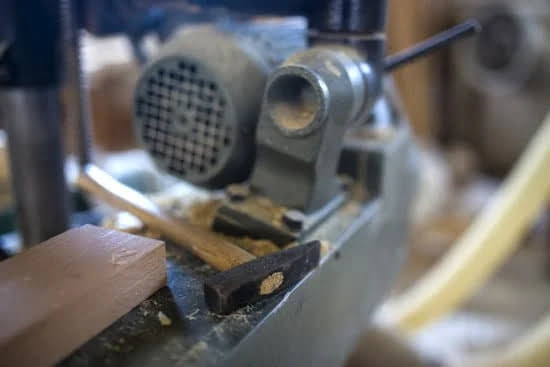
Setting Up A Home Woodwork Or Model Shop
A Step By Step Guide
Planning is the secret to a successful home workshop. More and more people are setting up a woodworking or model engineering shop, either in their basement or garage.
The first step is to make sure your location is dry. You may need to make repairs to your garage roof, windows or door. If you are planning on using your basement then you will need to waterproof it, so that damp and the corrosion and rot it causes do not become issues.
Your next step is to provide water and electricity supplies. You need to have hand washing facilities if you are going to keep your job clean. An electricity supply suitable for running your machine tools is essential. These tools will be permanently wired in. You will also need lots of switched electric sockets about three feet from the floor. These will be used for plug in tools.
The number of lights will need to be increased. Three fluorescent fittings will be enough for most home workshops. The glare free ones are better, but you may need to fit four of these. Be sure to fit them above your drill, saw and lathe.
You will need to consider the location for your machine tools. These need to be away from the door and back onto a wall. This reduces the possibility of someone walking round the back and being hurt.
You need to install a dust extraction system, especially for wood and plastic work. This will remove potentially harmful sawdust from your machining areas and collect it for disposal.
Choosing your tools and workbench are the final issues.
A few solid wood traditional woodworking benches are the best choice. These will last for years and are solidly built to last for years.
A lathe is the absolutely essential tool for home model makers and woodworking businesses.
It is essentially a device for reshaping square cross-section timber, metal or plastic into a circular cross-section piece of finished material. This is achieved by holding the material to be worked between 2 plates and spinning it. As the material spins someone holds a sharp tool against it, shaving off some of the material. Round table and chair legs are produced using lathes.
Lathes come in different specifications, designed for different intensities of use. The home model maker will clearly need a much lower spec lathe than the timber company making tables. Specification differences include the output of the motor, the distance between centers (the clamping plates), stands and chuck size.
It is possible to buy second-hand lathes without too much difficulty and someone starting out, either in home model making or in a home-based business should probably consider this option first.
The band saw has become the preferred power saw for most woodworkers. It has a long band of steel as the blade that travels around two or three wheels. The band comes in various widths and it is possible to use a narrow width band saw blade for scroll-work and irregular shapes.
Timber mills use very large band saws for ripping lumber; they are preferred over circular saws for ripping because they result in less waste.
Resaws are large band saws that are optimized for a narrow kerf, and therefore low waste. The blade is wide usually between 2 and 3 inches. They are primarily used for cutting wood along its thickness, to produce a veneer.
Home woodworkers can purchase a range of band saws suitable for use in the basement or garage workshop.

Hi everyone! I’m a woodworker and blogger, and this is my woodworking blog. In my blog, I share tips and tricks for woodworkers of all skill levels, as well as project ideas that you can try yourself.





